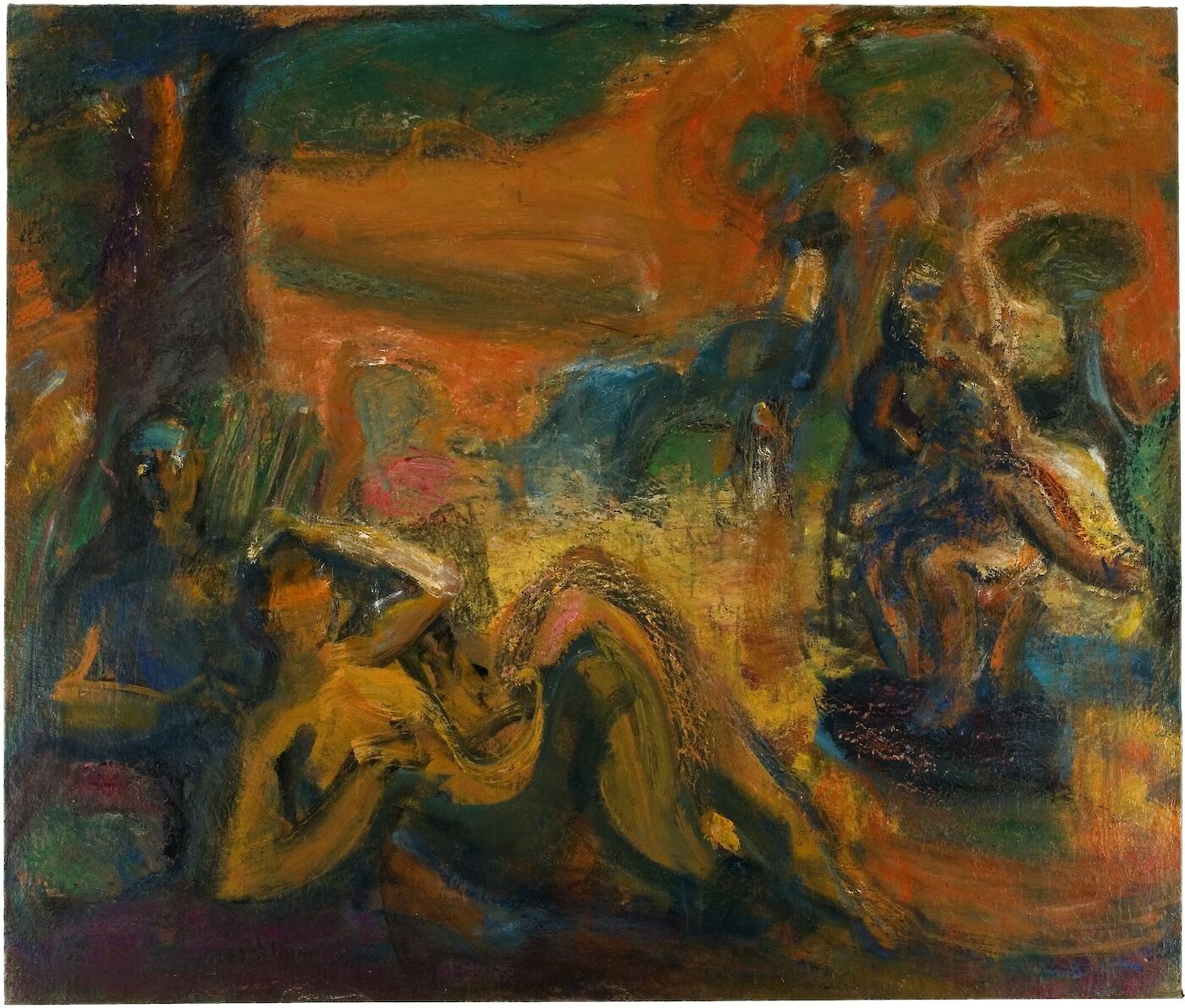Arcadian Memory

I enjoy so much visiting Younghee’s studio. I feel very close to what she is doing and our conversations about paintings in progress are wonderfully collegial, rich with specifics, and far ranging. The real joy for me, however, is in the next visit where I glimpse her thinking over time—how she has turned a particular work and has gone to a completely unexpected place. To see that is a rare privilege.
Hardly anyone struggles with the right things in painting anymore: figuration, conceptualized space, color keying, texture, the life of the paint, the narrative with baggage—in short, the full catastrophe. Younghee takes it on as it should be taken on, as one metamorphic, organic whole, defined by the format, slightly shifting now, then completely reworked, more concrete at a certain point, or less so, or more psychological, or more formal, or more diffused, or, perhaps, lost all together for a moment in just paint, to be refound again, this time as the shadows cast in the aftermath of an ancient battle, the glow of an Arcadian memory, or the pathos of separation.
One falls into these works, into their sophistication and their open hearted embrace of painting. They beckon you to float lightly along their surface until you are enveloped, finally, in their compelling feeling of longing for some sense of the wholeness we have lost.
© John Bradford, August 2004
“What might this be? A thousand fantasies
Begin to throng into my memory
Of calling shapes, and beckning shadows dire,
And airy tongues, that syllable mens names
On Sands, and Shoars, and desert Wilderness.”
— Comus, John Milton